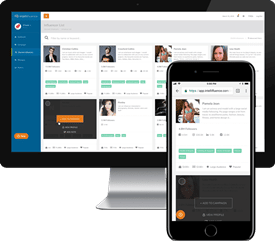If you are striving to figure out how people discover brands today, here’s a quick reality check: almost none of it happens by accident. Building an online brand presence isn’t a matter of posting a logo, pushing a bare bones website live, and hoping search engine algorithms reward your meager effort. It’s a deliberate, layered, strategic process grounded in consistency, creativity, and—most importantly—customer experience.
Let’s pause for a moment right now, take a deep breath, and ask a difficult question:
Why should anyone care about your brand?
Before you draft your first Instagram caption, before you choose your typography, before you even think about influencers, answer that. Brands that skip this introspective step often spend the next few years shouting into the void.
If you are able to honestly articulate why your brand deserves attention, you have already taken the most important step of building a brand. Now let’s discuss the process of building your presence in the marketplace—purposefully, strategically, and with customers at the center of every click, scroll, and purchase decision.
Step 1: Define Your Brand Identity
Let’s start with the foundational work. What do you stand for? Who do you serve? What feelings do you want to evoke when a customer lands on your website or sees your handle in a comment thread?
Identity is not just a logo.
It’s your voice, tone, values, color palette, customer promise, and the “world” your brand lives in. A strong identity helps you move through the rest of the steps for building a brand with clarity rather than chaos.
Ask yourself:
• What transformation does my product or service offer?
• What does my ideal customer value—and how do I reflect those values?
• What does my brand sound like when it talks? Friendly? Sarcastic? Professional? Uplifting?
Once you can answer these questions confidently, you’re ready to build outward.
Step 2: Build a Customer-Centric Experience (This Is Non-Negotiable)
Here’s where many fresh brands get it wrong:
They think the online brand presence is primarily about visuals, content, and marketing tricks. Let’s be honest—none of that matters if your customer experience is weak. Customers today expect more than transactions; they expect effortless, intuitive, human-centered journeys from discovery to purchase. So challenge yourself:
• Are you making it easy to find information?
• Are you answering questions before someone thinks to ask?
• Are you eliminating friction wherever possible?
• Are you present and responsive on the channels customers prefer?
Providing a superior customer experience isn’t an afterthought; it’s the engine behind brand loyalty. It’s what turns curious observers into active buyers, and buyers into advocates. Great customer experience means:
• Fast, mobile-friendly website pages
• Transparent information (pricing, shipping, policies)
• Consistent communication
• Friendly follow-up and support
• Intuitive navigation during the research/buying process
• A feeling that the brand actually cares
Want to establish a brand? Make people feel cared for.
Digital Marketing Pillars That Build Your Online Brand Presence
Now that we’ve tackled the fundamentals, let’s move into the practical components of building an online brand presence. These are non-optional pillars—customers expect brands to meet them where they already are.
A User-Friendly Website (Your Digital Headquarters)
Your website is often your customers’ first impression—and we both know you don’t get a second chance at that. A website that establishes a brand effectively should be:
• Mobile-optimized
• Easy to navigate
• Clear on what you offer
• Designed with conversion paths (CTAs, forms, purchase flows)
A common mistake? Designing for aesthetics instead of user experience. Gorgeous websites fail every day because they’re confusing. Your website’s job is simple: Help the user reach their goal with minimal friction.
Active, Purposeful Social Profiles
Social media is not a billboard—it’s a conversation. If you’re only posting promos, you’re not building your following; you’re shouting. To establish a brand on social media:
• Mix brand storytelling with value-driven posts
• Maintain consistent visuals and tone
• Engage more than you broadcast
• Showcase real customers, user-generated content, and behind-the-scenes moments
When people feel like they’re watching the making of a brand, they stick around.
Email Marketing (Still Criminally Underrated)
Some brands underestimate email because it feels old. Meanwhile, email remains one of the highest-ROI marketing channels for literally every industry on earth. Use email to:
• Nurture leads
• Communicate offers
• Share educational content
• Drive repeat purchases
• Re-engage inactive customers
Think of email as your direct line to people who asked to hear from you. Treat it carefully, and it becomes a long-term asset.
Your Content Strategy: The Backbone of Brand Visibility
Let’s talk content. If your brand identity is the heart, content is the oxygen—moving through every channel and keeping your online presence alive. Most new brands create content reactively (“What should I post today?”). But establishing a brand requires purposeful, strategic content creation. So let’s walk through what that actually looks like.
What Is an Editorial Calendar—and Why Do You Need One?
An editorial calendar is your roadmap. It outlines:
• What content you’ll publish
• On which platforms
• On what dates
• With what purpose
• Tied to which campaign or keyword
It frees you from last-minute scrambles and ensures you’re telling a cohesive brand story across channels.
To establish one:
1. Identify your pillars—the key themes your brand will always talk about
2. Map content types—blogs, videos, newsletters, social posts
3. Assign frequency—how often you’ll publish
4. Plan in monthly chunks—with flexibility for trends
5. Connect content to business goals
If your content doesn’t align with your goals, it’s noise. You need a healthy mix—not for the sake of variety, but to meet customers at different stages of awareness.
Blogs & Articles
Great for SEO, authority-building, and educating customers. They help you appear in search results when buyers are researching.
Tutorials & How-To Guides
People love being shown how to solve a problem. Teach, and they’ll trust you.
Case Studies & Testimonials
Proof. Evidence. Validation. These convert hesitant buyers.
Interactive Content
Quizzes, calculators, product match tools—engagement machines.
Social Media Content & UGC
Authentic, fast-moving, relatable.
Brand Storytelling
This is where emotional connection happens. Why you exist. Who you serve. What drives you.
Thought Leadership
Articles, videos, or posts showing your expertise. This positions you as a go-to authority. But here’s the real key: Content must be purposeful. It should:
• Answer real customer questions
• Support your SEO strategy
• Lead people toward a purchase or step in the funnel
• Reflect your brand values
• Create emotional or practical value
Without purpose, content is just… content. And the internet is already full of that.
Creating Content That Performs in Search AND Converts
Search engines love three things:
1. Depth
2. Clarity
3. Authority
Customers love three things:
1. Solutions
2. Story
3. Trust
Your best content satisfies both. To build this into your editorial process:
• Target keywords based on real search intent
• Organize content around topics (not just keywords)
• Provide genuinely helpful, detailed explanations
• Add examples, visuals, or data where possible
• Include calls-to-action that feel natural, not forced
• Keep everything optimized for mobile readability
Remember, the goal isn’t to rank. The goal is to rank and convert.
Influencer Marketing: The Heart of Modern Brand Visibility
Let’s address the giant in the room: Influencer marketing is no longer optional. It is one of the most important elements in building an online brand presence today. Why? Because influencers deliver something brands cannot buy with ads: Trust.
Consumers trust creators more than corporate marketing. They listen. They take recommendations seriously. They want to see real people use real products.
Intellifluence enables brands of any size to connect with influencers and bloggers all over the world. Yes, bloggers. Most influencer marketing networks do not include access to bloggers, which is an essential component of a successful content strategy. As of this writing, Intellifluence is home to nearly 25,000 bloggers and every creator in the network has joined on their own. This is why we can claim to be the largest warm contact influencer marketing platform in the world.

Featured Influencer: Jessica Klingbaum
I’m a NYC-based former Emmy-nominated TV producer turned essential oils advocate, which makes total sense because TV production to essential oils is the obvious path, right? I’m also a beauty junkie. I’m a divorced (and re-married) mom of 2 and stepmom of 1, and I have stories that could really be a sitcom. Or a book. Or reality TV, depending on who you ask. If I let my kids live through their teenage years, I’m sure they’ll have more to add. But I like to laugh, and have always been able to get through everything with a smile on my face. I mean, seriously, sometimes there’s no other option when you’re facing some of the ridiculousness I’ve had the joy of experiencing.
Most platforms simply give you access to an industry-wide database of creators, so you are essentially “cold calling” in your outreach. Our influencers are waiting to collaborate with you. Intellifluence has a plan for every budget, ranging from free (yes, free!) all the way up to an Advanced plan that includes monthly managed services for a straightforward subscription (and whatever compensation you offer creators).
Different Influencer Tiers & Why Each Matters
Here’s how influencers at different audience sizes help you establish a brand:
Nano Influencers (1k–10k followers)
• Highly engaged audience
• Authentic recommendations
• Perfect for hyper-specific niches
• Great for startups
Micro Influencers (10k–100k)
• Best engagement-to-cost ratio
• Strong credibility
• Ideal for UGC and long-term collaborations
Mid-Tier Influencers (100k–500k)
• Broader reach
• Strong authority
• Good for major campaigns or product launches
Macro Influencers (500k–1M)
• Big visibility
• Big impact
• Best for mature brands expanding reach
Mega Influencers (1M+)
• Mass awareness
• Celebrity association
• Excellent for “moment-making”
Every tier has its place; brands that understand this can scale strategically.
How to Attract Influencers to Your Brand
Many new brands assume that sending free products is enough. It’s not. If you want influencers—especially good ones—to participate:
• Offer fair cash compensation
• Provide a clearly defined creative brief
• Give them creative freedom
• Deliver products quickly
• Treat them as partners, not billboards
Creators talk to each other. If you treat them well, word spreads. And yes, you can leverage your products or services as part of compensation—but only when you also pair it with fair pay. “Product only” collaborations are fine for small creators just starting out, but they won’t get you top-tier partnerships.
Why Influencer Marketing Is Essential for Establishing a Brand
Influencers:
• Humanize your product
• Build instant trust
• Provide high-performing content you can repurpose
• Expand your reach into new communities
• Normalize your brand in the marketplace
• Drive conversions faster than ads alone
In many industries, influencer content outperforms brand-owned content in cost per acquisition—sometimes dramatically. If you’re serious about building your following or establishing a brand, influencers should be part of your core marketing engine, not an afterthought.
5 Common Mistakes New Brands Make (and How to Avoid Them)
Let’s save you some headaches.
Mistake 1: Trying to Be Everywhere Too Fast
New brands spread themselves across every platform and burn out. Start with the platforms your audience uses most.
Mistake 2: Inconsistent Branding
Changing tone, visuals, or messaging confuses people. Create brand guidelines and stick to them.
Mistake 3: Posting Content Without Purpose
More posts don’t equal more traction. Every piece of content should serve your strategy.
Mistake 4: Ignoring Customer Experience
A bad checkout flow or slow website will undercut every marketing effort. Fix the fundamentals early.
Mistake 5: Undervaluing Influencers
Brands often expect creators to work for free or produce miracles on tiny budgets. Set realistic budgets and treat influencers as partners.
Building an online brand presence isn’t a straight line. It’s an ongoing process of learning your audience, refining your identity, creating content that resonates, and showing up consistently across platforms. It’s about purpose, intention, and the courage to invest in the people—customers and influencers—who help bring your brand to life. Everyone wants to grow a brand. But only those who put in the work, care about the customer experience, and create meaningful content truly stand out. If you’re ready to do that? You’re already ahead of most brands out there.

SallyBot is committed to helping users get the most out of Intellifluence. By helping brands create campaigns, providing unparalleled customer service and offering useful advice, nothing makes SallyBot happier than hearing she is liked… Really, really liked.






